Part of a series of articles titled Plant Community Monitoring in Northern Great Plains Network Parks.
Article
Plant Community Monitoring at Mount Rushmore National Memorial
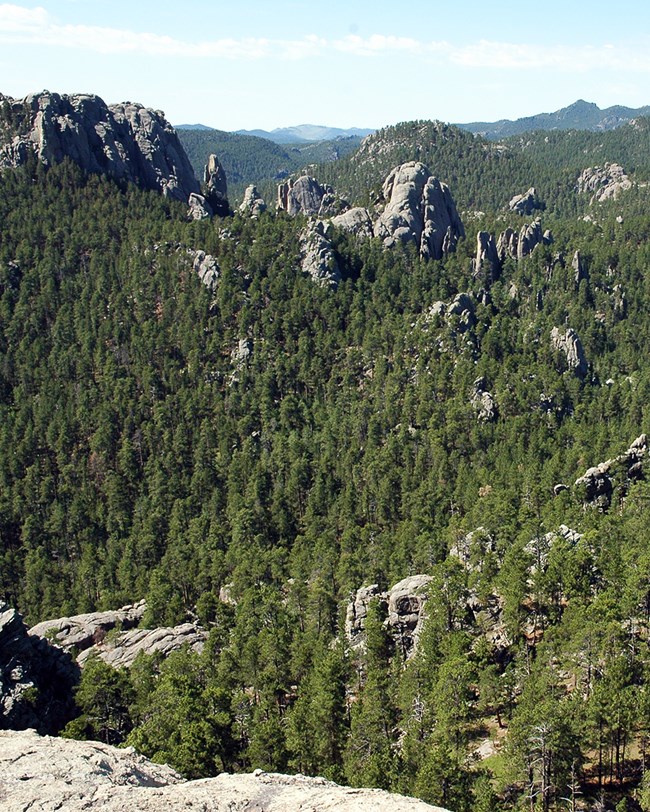
NPS
Overview
Mount Rushmore National Memorial is a relatively small park (1,278 acres) that contains the second-largest area of old growth pine forest in the Black Hills. Ponderosa pine (Pinus ponderosa) is the dominant plant throughout the park, but park plant diversity is very high. The Black Hills contain a unique ecosystem composed of species from the western Rocky Mountains, eastern deciduous forest, northern boreal forests, and the surrounding Great Plains.
Fire suppression over the last century had changed the forest structure from open to closed stands with a particular increase in small-diameter trees. A project to reduce fuels by decreasing stand density was undertaken in 2010. Goals were to reduce the susceptibility of forests to mountain pine beetle (Dendroctonus ponderosae) attacks and high severity fires, and to restore old growth characteristics. There is lower diversity of plants found under the closed-canopy of ponderosa pines on the park, but these stands of old forest are in pristine condition and provide a valuable reference point for other forests in the Black Hills. The Northern Great Plains Inventory and Monitoring Network conducts long-term monitoring of plant communities at Mount Rushmore National Memorial because it helps us better understand the current health of ecosystems, it is essential for determining sound management of ponderosa forests, and it can provide an early warning of undesirable changes.
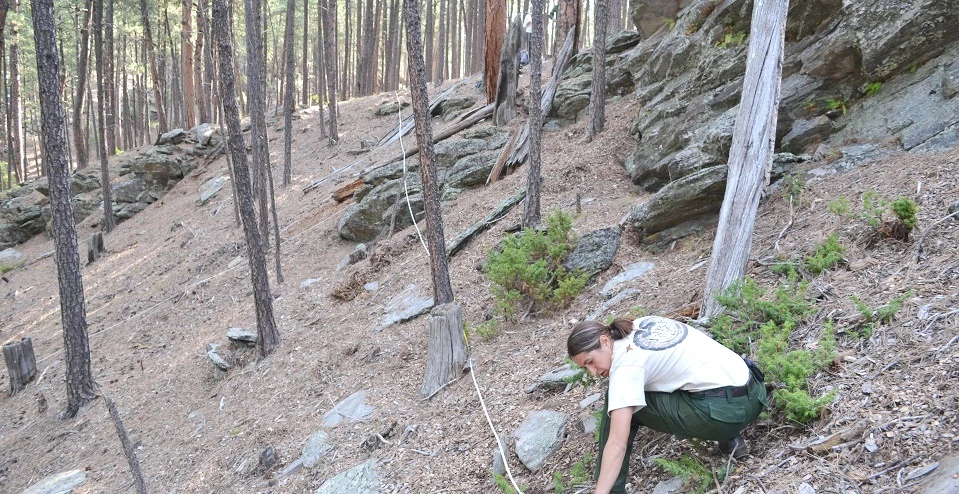
NPS
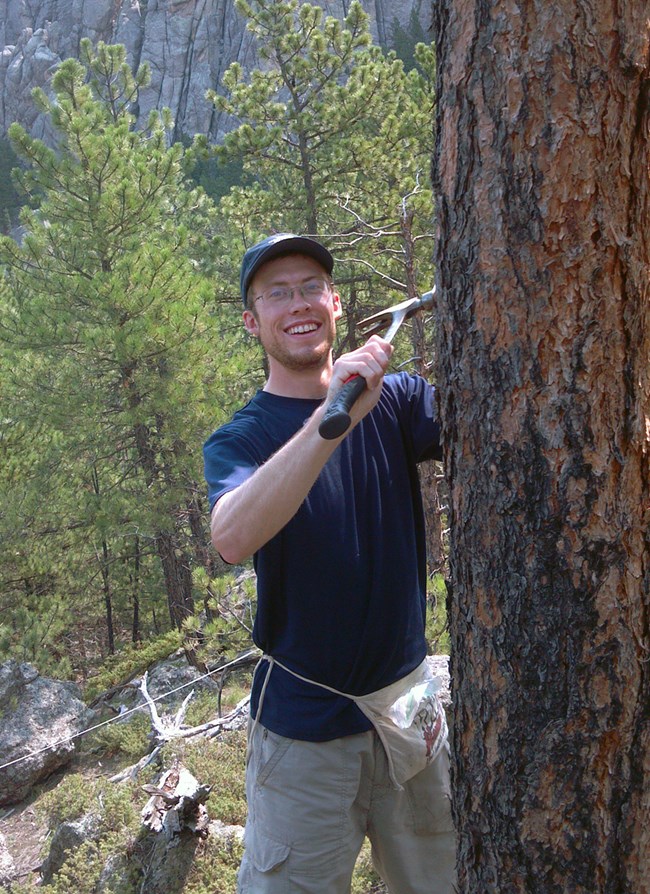
NPS
What We Monitor
The Northern Great Plains Network established plant monitoring plots in 2010 throughout Mount Rushmore National Memorial. A subset of these plots is monitored each year on a rotating basis. At each plot, we record the native and exotic plant species found and the vegetation cover of each species, a measure of how much ground is covered by the plants. When woody species are present, tree regeneration and tall shrub density data are collected. We map and tag larger trees and record the status (live or dead) and condition (leaf-discoloration, insect-damaged, etc.) of each tree. The NPS Northern Great Plains Fire Ecology Program began vegetation monitoring on the park in 1998 to better understand and manage the forest, but our network’s current methods for monitoring plants began in 2010.
In 2010, 2012, and 2016, we surveyed 60 forest plots to better understand the status and trends in forest health. We measured tree stem density, tree diameter, live and dead tree condition, forest fuel loading, cover of exotic species and disturbance. These plots will be surveyed every five years after the 2016 sampling.
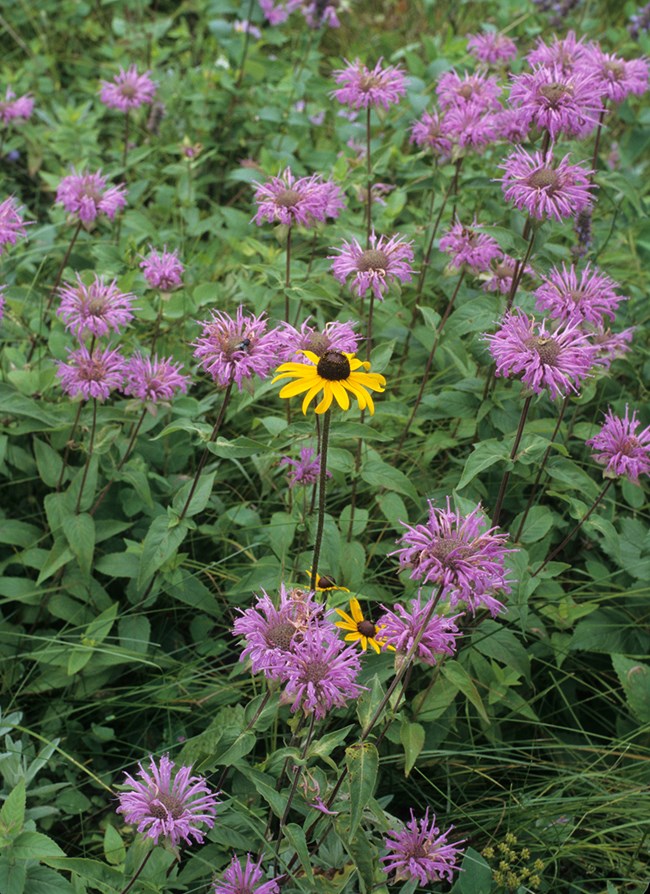
NPS
Plant Communities in the Park
The Mount Rushmore National Memorial species list includes 452 plants. In 2018, 76 unique plant species were found on monitoring plots (forest plots were not surveyed in 2018). Over 230 species have been found on plots since 1998. Graminoids (grasses, sedges, and rushes) accounted for most of the vegetation cover on the park, but shrubs were also abundant. The most common species on the park is common juniper (Juniperus communis), a small shrub. Richardson’s sedge (Carex richardsonii), Ross’s sedge (Carex rossii), and poverty oatgrass (Danthonia spicata) were recorded frequently, but with low vegetation cover. Ponderosa pine and a low-growing shrub, kinnikinnick (Arctostaphylos uva-ursi), were also very common. Nine rare plants have been detected since monitoring began.
Since the 2010 thinning of forests, plant cover and native species richness have increased in forests. This is likely due to a decrease forest canopy area, allowing more light to reach the forest floor. Forest density is now similar to historical forest conditions, the risk of crown fire has been reduced, and deciduous species are regenerating. Chokecherry (Prunus virginiana), serviceberry (Amelanchier alnifolia), paper birch (Betula papyrifera), and ponderosa pine seedlings are common.
More Details
- Average vegetation cover of exotic plants at the park is very low, less than 1% from 2013 to 2017, which is well below the exotic species management target level of 10% or less.
- Seven target exotic species were identified during forest structure monitoring in 2016. Canada thistle (Cirsium arvense), a noxious species in South Dakota, was identified in 58% of the plots, though the cover was low. Smooth brome (Bromus inermis), Common mullein (Verbascum thapsus), and Houndstongue (Cynoglossum officinale) were also found.
- We found no change in seedling counts over time for most tree species, except for paper birch, which increased significantly.
- The mountain pine beetle (Dendroctonus ponderosae) epidemic caused only pockets of tree mortality in the park; the epidemic peaked in 2013 and was over in 2016.
- While the risk of crown fires is now reduced, fuel loads on the park average about 27 tons/acre. This exceeds the target range of 2 to 12 tons/acre and can lead to risk of high-intensity fire.
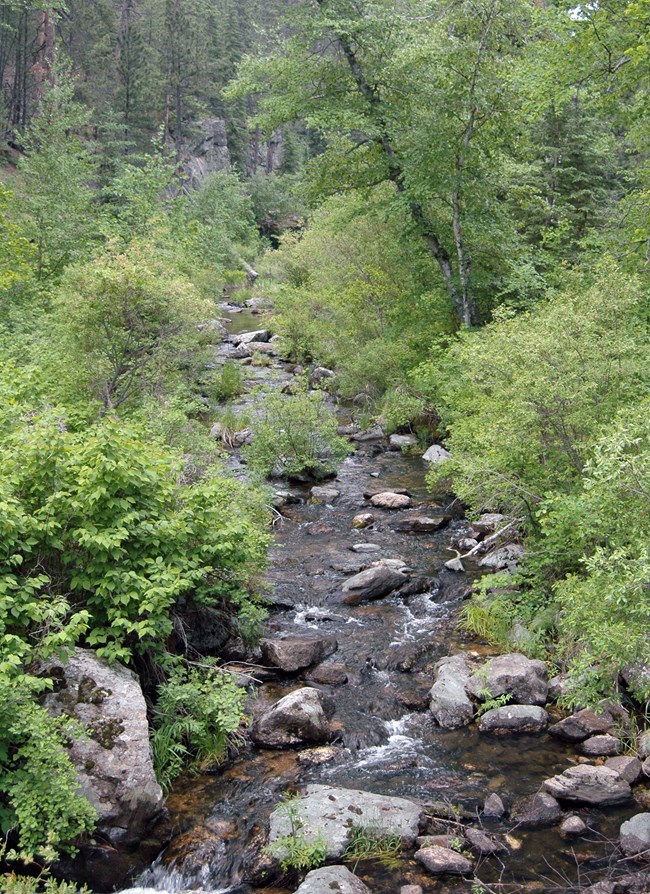
NPS
Did You Know?
While our methods are not designed to survey rare plants or detect changes in their populations, we identified nine rare species at Mount Rushmore National Memorial. Richardson’s sedge, imperiled in Wyoming, was present in many of our plots. This low-growing perennial sedge is widespread and common in Canadian provinces along the U.S. border, but is rare in the U.S., except in the Black Hills, where it is relatively common. While it is not listed as rare in South Dakota, it is of concern because of the geographic isolation of the Black Hills populations.
Several isolated populations of the rare Northern selaginella (Selaginella rupestris) are found in the Black Hills. It is relatively common in eastern Canada and in a few eastern U.S. states, but it is considered critically imperiled in Wyoming and is under review for rare classification in South Dakota.
For More Information
Visit the Northern Great Plains Network website to read more about plant monitoring at Mount Rushmore National Memorial.
Protocol Contact, Northern Great Plains Inventory and Monitoring Network: Isabel Ashton
Summary by Northern Great Plains Network, updated in 2019
Last updated: November 7, 2019
